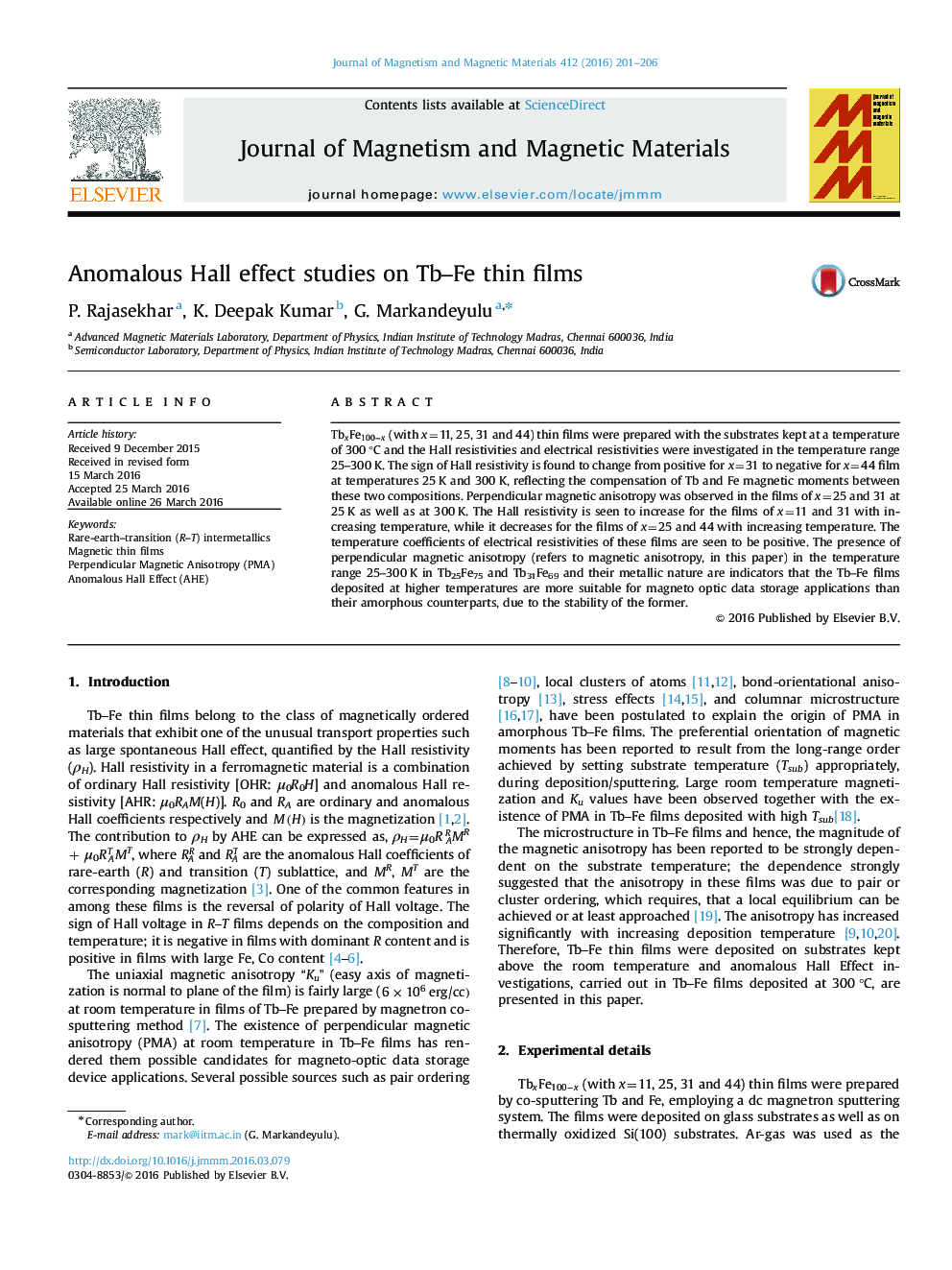| Article ID | Journal | Published Year | Pages | File Type |
|---|---|---|---|---|
| 1797941 | Journal of Magnetism and Magnetic Materials | 2016 | 6 Pages |
•Perpendicular Magnetic Anisotropy (PMA) observed in Tb25Fe75 and Tb31Fe69 films.•Temperature coefficients of electrical resistivities observed to be positive.•Random magnetic anisotropy not observed due to high deposition temperatures.•Insignificant contribution from magneto-elastic effect driven anisotropy observed.
TbxFe100−xTbxFe100−x (with x=11, 25, 31 and 44) thin films were prepared with the substrates kept at a temperature of 300 °C and the Hall resistivities and electrical resistivities were investigated in the temperature range 25–300 K. The sign of Hall resistivity is found to change from positive for x=31 to negative for x=44 film at temperatures 25 K and 300 K, reflecting the compensation of Tb and Fe magnetic moments between these two compositions. Perpendicular magnetic anisotropy was observed in the films of x=25 and 31 at 25 K as well as at 300 K. The Hall resistivity is seen to increase for the films of x=11 and 31 with increasing temperature, while it decreases for the films of x=25 and 44 with increasing temperature. The temperature coefficients of electrical resistivities of these films are seen to be positive. The presence of perpendicular magnetic anisotropy (refers to magnetic anisotropy, in this paper) in the temperature range 25–300 K in Tb25Fe75 and Tb31Fe69 and their metallic nature are indicators that the Tb–Fe films deposited at higher temperatures are more suitable for magneto optic data storage applications than their amorphous counterparts, due to the stability of the former.
